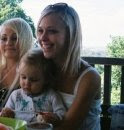
Who doesnt love Google Earth? It is an encapturing, fun program which lets you "fly anywhere on Earth to view satellite imagery, maps, terrain and 3D buildings" (Google Earth, 2009). Within an hour this free program allowed me to travel across the world and our galaxy to places I never thought I would ever get the opportunity to see up close!
The Google Earth program gives endless capabilities to educational learning designs within the classroom. There are various ideas and applications in how to incorporate Google Earth as an effective and engaging learning tool within the classroom, whether it be within a tertiary, high school or primary school setting. Within a year six class students are travel agents and are promoting the seven wonders of the world tour (or this could be extended for some students as to plan a backpacking trip around Europe or a location of their choice etc). As a project they need to explore the seven wonders of the world (whether these be ancient, modern, man made or natural) and create their own virtual tour to present to other students, within this presentation. The students virtual tour must be accompanied with dates, a schedule, flight costs and bookings (or transfers/car hires/ tours) as well as accommodation and a list of what they would need to take with them .
Kearsley and Shneiderman Engagement Theory (1999) encompasses the use of google earth within this learning design as it bases itself around authentic learning experiences which enhance collaborative learning involving active cognitive processes such as creativity, problem solving and critical thinking skills. Based upon the learning experience mentioned students students will be collaborating and working together to piece together their holiday tour/virtual tour gaining skills needed in order to book and prepare for your own holiday, together they will create a persuasive presentation to try and 'sell' their perfect and affordable holiday. The second aspect of the learning design incorporates the students creating their own virtual tour through the use of Google Earth. Students can use this program to find directions to where they need to go and can use it as an effective tool in sequencing their holiday route. The students will then present their holiday tour to the rest of the class (prospective clients) and try to 'sell' their holiday through the creation of their virtual tour and information. These sequenced steps within the learning design follow the create, relate and donate phases within the Engagement Theory giving students the opportunities to enhance their learning through an authentic project that encourages the development of skills needed to survive within society.
Of course this learning experience could easily be adapted to suit the type of learners that are in the classroom (whether this means extra scaffolding and more teacher directed learning experiences or more of a student directed approach).
References
Kearsley, G. & Shneiderman, B. (1999). Engagement Theory: A framework for technology based teaching and learning. Retrieved August 13, 2009, from http://home.sprynet.com/~gkearsley/engage.htm
Google. (2009). Google Earth. Retrieved August 13, 2009, from http://earth.google.com/




No comments:
Post a Comment